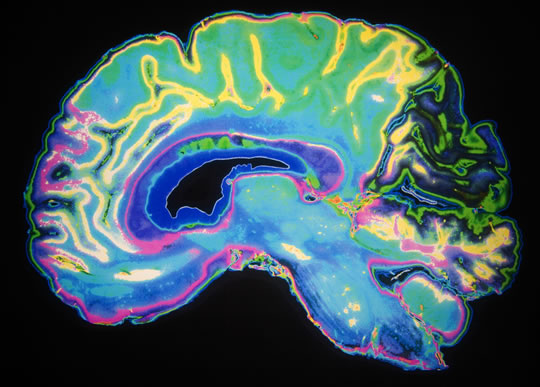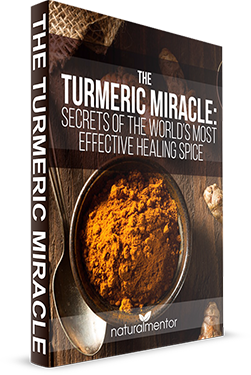How Toxicity Can Lead to Alzheimer’s (And How to Prevent It)

Alzheimer’s disease is an enormous health issue—and its prevalence continues to increase. It now claims more than half a million American lives every year, making it the third leading cause of death, behind cancer and heart disease.[1]
Like cancer, heart disease, and other top killers, the etiology and mechanisms of Alzheimer’s are extremely complicated. But there’s something else that all of these serious conditions have in common: their development is strongly linked with lifestyle and environmental factors (more so than genetic factors, according to many experts).
Let’s take a look at some of the latest research on why Alzheimer’s has become an epidemic, and even more importantly, how we can stop it.
The complex story behind amyloid plaque buildup
Researchers have long held that the buildup of amyloid beta plaque in the brain is one of primary factors involved in the development of Alzheimer’s. “Amyloid beta” is a fancy name for a peptide group of amino acids that have formed a protein with particularly affinity for nerve cells in the brain—unfortunately, amyloid plaques are toxic to these nerves, and can also catalyze the formation of other harmful proteins (such as the tau protein).[2]
The tau protein is the latest star of the show, with many experts jumping ship from the amyloid beta hypothesis in favor of this newly researched “cause” of Alzheimer’s. This is because Alzheimer’s drugs aren’t working, despite being developed with amyloid beta plaque as their target—some say this failure to allay symptoms must refute the causal connection between amyloid plaques and cognitive decline.[3]
But it’s not that simple.
Dr. Dale Bredesen, director of neurodegenerative disease research at the UCLA School of Medicine, believes that conventional medicine is viewing the problem from the wrong perspective. He theorizes that amyloid plaques are not an isolated cause; rather, they’re a symptom of a deeper issue in the body (one which is probably the “cause” of both amyloid plaques and the symptoms of Alzheimer’s).
Amyloid plaques are not an invading pathogen, but instead a defense mechanism engineered by the body (much like oxidative stress and inflammatory response, both of which can also wreak havoc if the underlying issues are not dealt with). It stands to reason, then, that pharmaceuticals that target only these plaques (and not their underlying risk factors) are bound to fail.
The situation is akin to treating arthritis with NSAIDs and other painkillers—temporarily turning off pain receptors does nothing to heal the underlying arthritic condition. And in the case of Alzheimer’s, targeting amyloid plaque may be even more dangerous, because the plaque is your body’s defense against some systemic imbalance. Unless that imbalance is addressed, the condition may continue to worsen, with or without plaque buildup.
An integrative brain-healing program
Following this line of thought, Dr. Bredesen advocates an integrative treatment protocol instead of a “monotherapeutic approach” (i.e. using an Alzheimer’s drug to target one marker of the disease, such as amyloid plaques). His approach simultaneously works on reducing plaque buildup while addressing the underlying factors that induced the body to develop plaque in the first place.
And here’s the good news: his program is working wonders. He has demonstrated that this multi-pronged therapeutic method is capable of reversing cognitive decline—something long deemed impossible by the mainstream Alzheimer’s research community. For example, one man who had a 20th percentile hippocampal volume before starting Dr. Bredesen’s program had increased it to the 75th percentile in one year (meaning that he literally increased the size of his hippocampus).[4]
The only downside to this treatment method is that it’s a complex, multi-variable protocol that requires commitment and vigilance on the part of the patient and caretakers. But then again, we already knew that miracle pills are a pipe dream, right?
Luckily, reversing cognitive decline is dependent upon optimizing many aspects of your health with which (if you’ve read many of our previous articles) you’ll already be familiar.
As usual, inflammation and oxidative stress play a prominent role in the development of Alzheimer’s. Both are runaway bodily defense mechanisms triggered by chronic toxicity, and both can in turn lead to mitochondrial dysfunction and other precursors to cognitive decline.
Thus, any successful brain-healing protocol begins with lifestyle practices for reducing inflammation, oxidative stress, and other symptoms of underlying toxicity. Here’s how to get started…
- Pack your diet full of antioxidant-rich, anti-inflammatory foods like turmeric, raw cacao, dark berries and leafy greens. Get rid of the processed foods, processed sugar, unhealthy fats (trans and polyunsaturated), and GMO foods.
- Get your nutrient levels tested and use supplementation to take care of any deficiencies you may have. Vitamin D, vitamin B12, zinc, copper, and glutathioneare especially important for preventing or reserving cognitive decline.
- Supercharge your body’s detoxification mechanisms with frequent exercise, cold showers, infrared sauna sessions, and intermittent fasting. Combine these practices with liposomal glutathione supplementation for even greater success.
- Minimize your exposure to environmental and household toxins, EMF-producing devices, and other toxin sources of modern living.
References

No comments:
Post a Comment